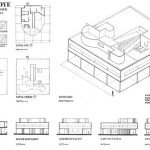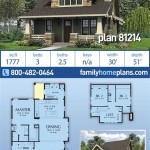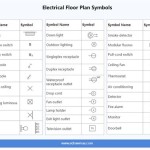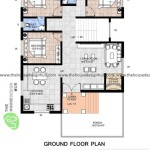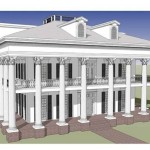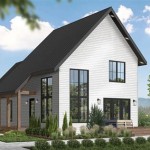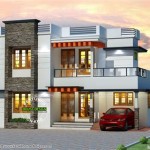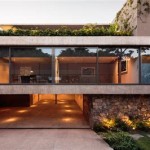Exploring the Benefits of 3D Floor Plan Views in Architectural Design
Floor plan 3D views have revolutionized the way architects, designers, and clients visualize and interact with architectural designs. This technology transforms traditional two-dimensional blueprints into immersive, three-dimensional representations, offering a comprehensive understanding of spatial relationships, design elements, and overall aesthetics. The adoption of 3D floor plan views has significantly impacted various stages of the design process, from initial concept development to final client presentations. This article will delve into the numerous advantages offered by this visualization technique and examine its growing importance in the field of architecture.
Enhanced Visualization and Spatial Understanding
One of the primary benefits of 3D floor plan views is their ability to provide a superior level of spatial understanding compared to traditional 2D drawings. 2D floor plans, while essential for technical documentation, can be challenging for clients unfamiliar with architectural conventions to interpret accurately. Understanding the relationships between rooms, the scale of spaces, and the overall flow of the design requires a certain level of expertise and spatial reasoning.
3D floor plans, on the other hand, present a more intuitive and accessible representation of the design. By rendering the space in three dimensions and allowing for virtual walkthroughs, they eliminate ambiguity and provide a clear sense of the layout. Clients can easily visualize the size and shape of rooms, the placement of furniture, and the overall ambiance of the space. This enhanced visualization leads to a greater level of engagement with the design and allows for more informed decision-making.
Furthermore, 3D floor plans are particularly helpful in identifying potential spatial issues that might not be apparent in 2D drawings. For example, a clash between a door swing and a piece of furniture, or an uncomfortably narrow hallway, can be easily spotted in a 3D view. This proactive identification of problems allows for adjustments to be made during the design phase, saving time and money later in the construction process. The comprehensive nature of 3D visualization minimizes interpretation errors and provides a realistic preview of the final product.
Improved Communication and Collaboration
Effective communication is paramount in any architectural project, involving architects, designers, contractors, and clients. Misunderstandings and misinterpretations can lead to costly mistakes and delays. 3D floor plan views serve as a powerful communication tool, bridging the gap between technical designs and client expectations. They facilitate a shared understanding of the design intent and ensure that all stakeholders are on the same page.
Architects can use 3D floor plans to present their design ideas in a clear and persuasive manner. The immersive nature of the visuals allows clients to feel as though they are actually walking through the space, experiencing the design firsthand. This helps to build confidence in the architect's vision and fosters a strong working relationship. Furthermore, 3D floor plans can be easily shared electronically, allowing for remote collaboration and feedback from clients and consultants regardless of their location.
Contractors also benefit from 3D floor plans. They can use the visuals to better understand the design intent and coordinate their work more effectively. By having a clear picture of the final product, contractors can anticipate potential challenges and plan their construction activities accordingly. This leads to improved efficiency and reduced errors on site. Furthermore, 3D floor plans can be used as a valuable training tool for new construction workers, helping them to familiarize themselves with the project before work begins.
The use of 3D floor plan views can contribute to streamlined workflows, leading to faster project completion times and reduced overall project costs. The ability to visualize, communicate, and collaborate effectively through this medium contributes to a reduction in costly errors during construction.
Streamlined Design Iteration and Exploration
The design process is inherently iterative, involving multiple rounds of revisions and refinements. 3D floor plan views facilitate this iterative process by allowing for quick and easy exploration of different design options. Architects can experiment with various layouts, materials, and finishes, and immediately visualize the impact of their changes on the overall design. This allows for a more informed and efficient decision-making process.
Software applications that create 3D floor plans often incorporate features that allow for real-time adjustments and modifications. For example, an architect can change the color of the walls, reposition furniture, or explore different lighting schemes with a few clicks. The ability to see the results of these changes instantly allows for a rapid exploration of design possibilities and a more tailored approach to client requirements.
Furthermore, 3D floor plan views can be used to test the feasibility of different design ideas. By simulating the space in three dimensions, architects can identify potential problems such as insufficient natural light or awkward circulation patterns. This allows for adjustments to be made early in the design process, avoiding costly rework later on. The capability to manipulate and evaluate different design options helps in refining the design and achieving the best possible outcome.
The integration of virtual reality (VR) technology with 3D floor plan views takes this exploration to an even higher level. VR headsets allow clients to fully immerse themselves in the design, experiencing the space as if they were physically present. This level of immersion provides invaluable insights into the design and helps to build a stronger connection with the project. VR walkthroughs can be particularly effective in presenting complex designs or showcasing unusual architectural features.
In summary, 3D floor plan views are more than just visualizations; they are powerful tools that enhance understanding, improve communication, and streamline the design process. Their increasing adoption across the architectural industry reflects their value in creating better spaces and fostering collaborative relationships.

3d Floor Plans

3d Floor Plans Easily Communicate Your Vision Cedreo

3d Floor Plans

3d Floor Plans

Hiee Here Is The 3d View Of Home Plans Just A Look To Give Clear Picture Views Ch House Design Floor N

3d Floor Plans

3d Plans Vertex

How Do You Make A 3d Floor Plan

3d Plans Vertex

Everything You Need To Know About 3d Floor Plans

